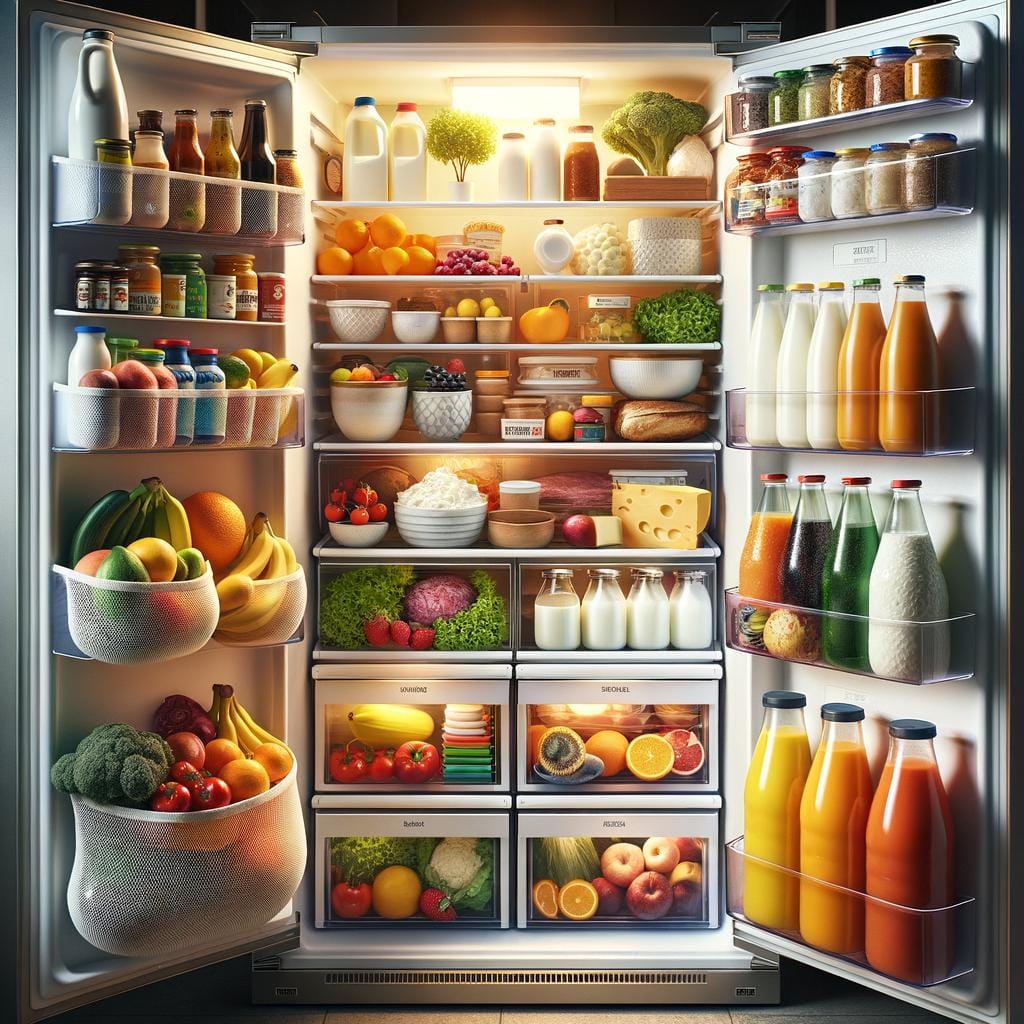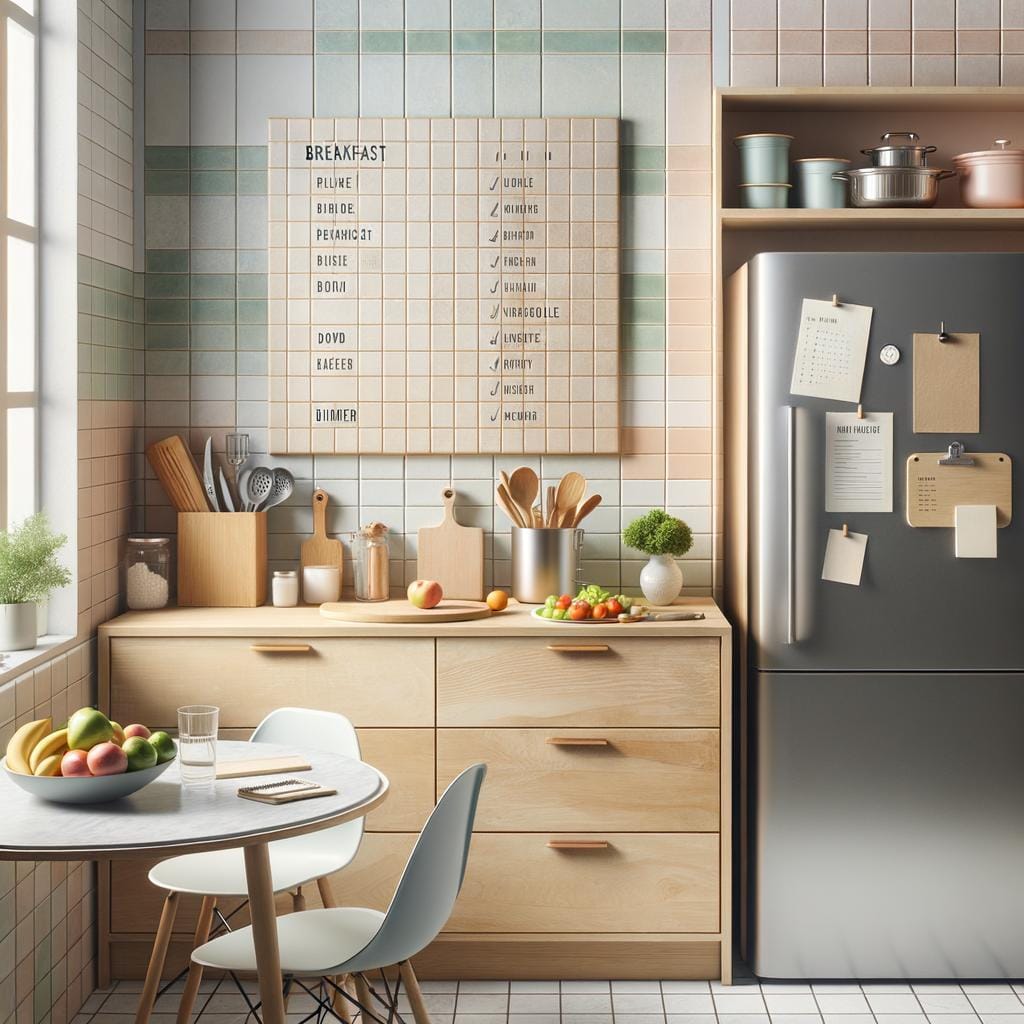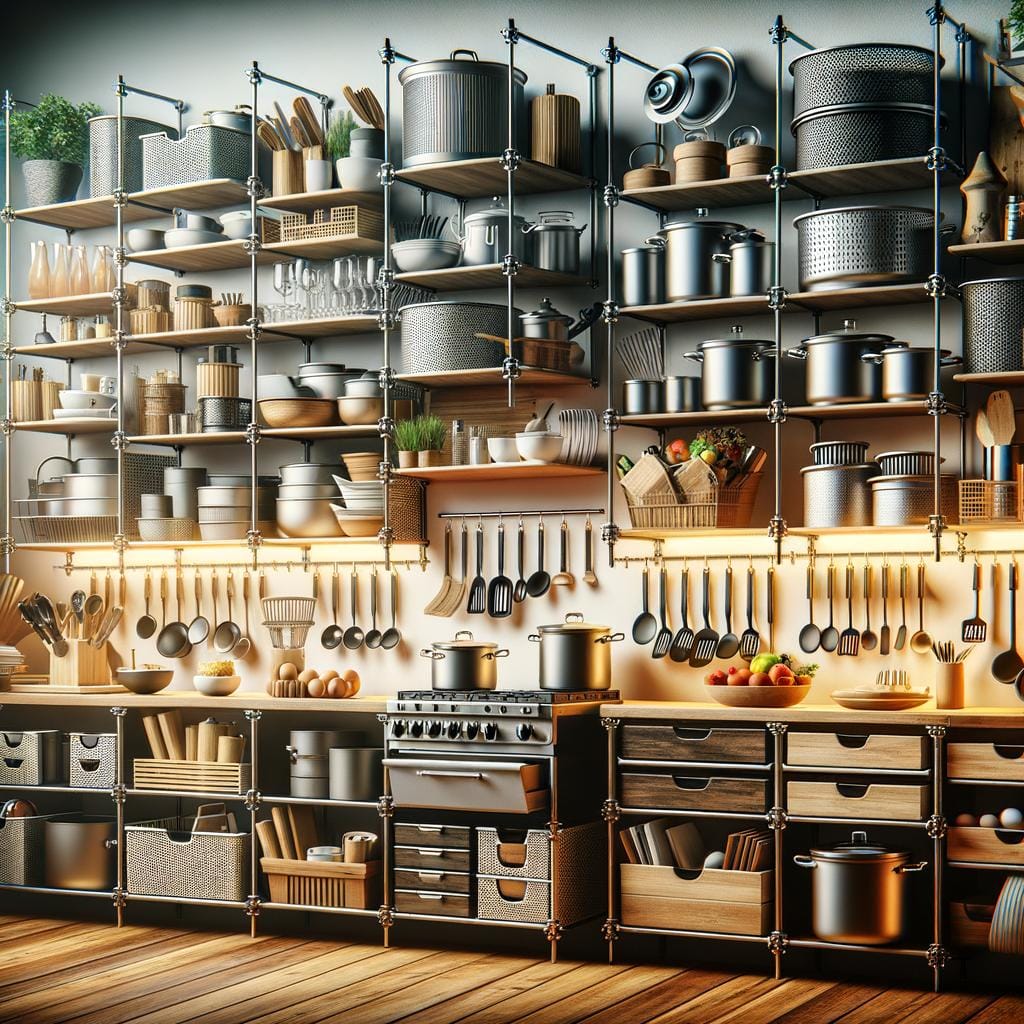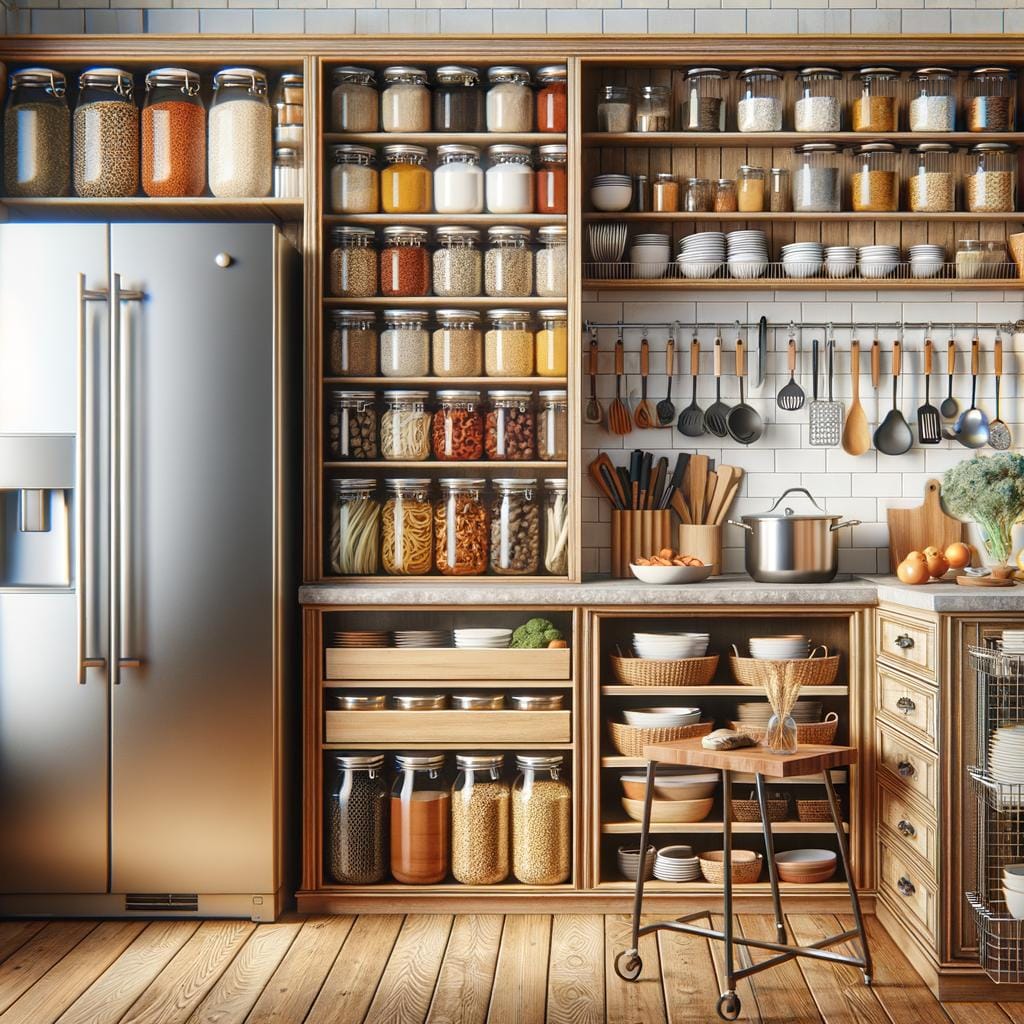A well-organized refrigerator is essential for maintaining a stress-free kitchen environment and ensuring your food stays fresh longer. Proper refrigerator organization not only helps in decluttering your space but also makes it easier to find what you need quickly. From utilizing the door and drawer space efficiently to categorizing food items properly, there are various ways to maximize the functionality of your refrigerator.
One of the key aspects of efficient refrigerator organization is utilizing the available space effectively. By using the right containers and categorizing food items based on type, such as meat, dairy, fruits, and vegetables, you can streamline the process of locating ingredients and prevent food waste. With weekly maintenance tips and creative labeling systems, you can ensure that your refrigerator remains organized at all times.
In this article, we will explore the benefits of a well-organized refrigerator, how to declutter your fridge effectively, and the best containers to use for optimal organization. Additionally, we will discuss how to make the most out of door and drawer space, share tips for creative labeling techniques, address common mistakes to avoid, and provide insights on maintaining a tidy refrigerator for a convenient kitchen experience.
Whether you are looking to revamp your current refrigerator setup or simply seeking ways to enhance your organization skills, this guide will help you achieve a more efficient and stress-free kitchen environment.
Benefits of a Well-Organized Refrigerator
A well-organized refrigerator offers numerous benefits that go beyond just aesthetics. One of the primary advantages is the ability to reduce food waste. When your refrigerator is properly organized, you can easily see what items you have on hand, preventing them from getting buried and forgotten. This not only helps in using up ingredients before they spoil but also saves you money by avoiding unnecessary purchases of items you already have.
Furthermore, a well-organized refrigerator can help improve food safety. By storing perishable items like meat, dairy, and leftovers in designated areas and at the appropriate temperatures, you can reduce the risk of cross-contamination and foodborne illnesses. By following proper storage guidelines and keeping your refrigerator clean and organized, you can ensure that your food stays fresh longer and maintains its quality.
In addition to reducing waste and enhancing food safety, a well-organized refrigerator can also save you time and energy. With everything neatly arranged and labeled, meal prep becomes more efficient as you can quickly locate ingredients without having to rummage through cluttered shelves.
This streamlined process not only makes cooking more enjoyable but also encourages healthier eating habits by making healthy options more accessible. Overall, investing time in maintaining a well-organized refrigerator can lead to a more stress-free kitchen experience.
How to Declutter Your Refrigerator
Having a cluttered refrigerator not only makes it difficult to find food items but also can lead to food waste and an inefficient use of space. Decluttering your refrigerator is an essential step in achieving better refrigerator organization. Here are some tips on how to declutter your refrigerator effectively.
Empty and Clean
The first step in decluttering your refrigerator is to completely empty it out. Remove all the items from the shelves and drawers, discarding anything that is expired or spoiled. Take this opportunity to give your refrigerator a good cleaning – wipe down the shelves, drawers, and walls with a mild cleaner. This will help create a fresh start for your refrigerator organization.
Organize by Category
Once your refrigerator is clean, categorize the items you removed into groups such as meat, dairy, fruits, vegetables, beverages, condiments, and leftovers. This will help you visually see what you have and how much space each category occupies in your fridge. Consider using clear containers or bins to group similar items together and keep them organized.
Maximize Shelf Space
To make the most of the shelf space in your refrigerator, consider utilizing stackable containers or storage bins. These can help you take advantage of vertical space and prevent items from getting lost at the back of the fridge. Additionally, invest in drawer dividers or trays for organizing smaller items like cheese slices or deli meats. By maximizing shelf space, you can easily access all your food items without creating a cluttered mess in your fridge.
By following these decluttering tips and strategies for better refrigerator organization, you can create a more functional and efficient kitchen space. Keeping a tidy and organized refrigerator not only saves time when meal planning but also helps reduce food waste by keeping track of what you have on hand. Start implementing these techniques today for a stress-free kitchen experience every time you open your fridge.
Best Containers for Refrigerator Organization
Having the right containers for refrigerator organization is essential to maximizing space and keeping your food fresh. One of the best types of containers for this purpose are clear, stackable bins. These bins allow you to easily see what’s inside, making it simple to grab what you need without having to rummage through the fridge. Additionally, their stackable nature helps in utilizing vertical space efficiently, especially for items like deli meats, cheeses, or condiments.
Another great option for refrigerator organization is storage containers with adjustable dividers. These containers allow you to customize the compartments based on your needs, whether it’s separating different types of fruits or keeping smaller items like berries from rolling around. The flexibility they offer makes it easier to keep similar items together and prevent them from getting lost in the depths of your fridge.
Lastly, investing in produce-specific storage containers can help extend the shelf life of your fruits and vegetables. These containers often have ventilation holes or trays that prevent moisture buildup, keeping your produce fresh longer. By categorizing your food items into these specialized containers, you not only maintain an organized fridge but also ensure that everything stays at its best quality for as long as possible.
| Container Type | Benefits |
|---|---|
| Clear, Stackable Bins | Maximizes space; easy visibility |
| Storage Containers with Adjustable Dividers | Customizable compartments; prevents items from moving around |
| Produce-Specific Containers | Extended shelf life for fruits and vegetables; prevents moisture buildup |
Categorizing Food Items
When it comes to maintaining a well-organized refrigerator, one of the key aspects is categorizing food items effectively. By separating different types of foods into specific areas within your refrigerator, you can not only keep things tidy but also ensure that your groceries stay fresh for longer periods of time.
Meat and Dairy
One important category when organizing your refrigerator is to separate meat and dairy products from other food items. Raw meats should be stored in the lowest part of the fridge to prevent any potential cross-contamination with other foods. Dairy products, such as milk, cheese, and yogurt, should be kept in cooler sections of the refrigerator to maintain their freshness.
Fruits and Vegetables
Another crucial aspect of refrigerator organization is separating fruits and vegetables. Fruits like apples, berries, and citrus fruits should be stored in the produce drawer or crisper to maintain their flavor and texture. On the other hand, leafy greens and vegetables like broccoli and carrots should also be kept in separate compartments to avoid premature spoiling.
Condiments and Beverages
In addition to categorizing perishable items like meat and produce, it’s also essential to organize condiments and beverages effectively in your refrigerator. Store condiments such as mayonnaise, ketchup, and salad dressings on door shelves for easy access. Beverages like juice boxes or soda cans can be stored on designated shelves or baskets for quick retrieval without cluttering up valuable space on the main shelves.
By categorizing food items strategically within your refrigerator, you can streamline meal prep, minimize food waste, and easily locate ingredients when needed. Maintaining a systematic approach to refrigeration organization will not only save you time but also contribute to a more efficient cooking experience in the kitchen.
Utilizing Door and Drawer Space Efficiently
When it comes to refrigerator organization, maximizing the available space is crucial to ensure efficiency and accessibility. The door and drawer spaces in a refrigerator often go underutilized, but with some strategic planning, these areas can also contribute to keeping your fridge organized. Here are some tips on how to make the most out of your door and drawer space:
- Utilize Door Shelves: Door shelves are perfect for storing condiments, sauces, and small jars. Make use of clear containers or bins to keep similar items together and easily visible. This not only helps in keeping things organized but also saves space on the main shelves for larger items.
- Drawer Dividers: If your refrigerator has drawers, consider using dividers to create sections for different food categories. This helps in preventing items from rolling around and keeps them neatly separated for quick access.
- Hanging Storage Solutions: Some refrigerators come with built-in hooks or hanging racks on the doors. These can be used to hang small bags of produce, kitchen towels, or even grocery lists. By utilizing these hooks effectively, you can free up more shelf space inside the fridge.
Incorporating these strategies into your refrigerator organization routine can transform the way you use your fridge on a daily basis. By thinking creatively about how to maximize every inch of space, you can establish a system that works efficiently for your needs while ensuring that all your food items are stored safely and remain easily accessible.
Remember that maintaining an organized refrigerator not only saves time but also helps in reducing food waste by allowing you to see what items you have at a glance. With proper utilization of door and drawer spaces, along with other organization methods outlined in this article, you can create a functional system that makes meal preparation easier and more enjoyable. Start implementing these tips today to transform your refrigerator into a clutter-free zone that enhances your kitchen experience.
Weekly Maintenance Tips for Refrigerator Organization
After decluttering and organizing your refrigerator, it is essential to establish a weekly maintenance routine to ensure that your fridge remains orderly and functional. One key tip for maintaining refrigerator organization is to regularly check for expired or spoiled items.
Set aside some time each week to go through the contents of your fridge and discard any food that has passed its prime. This practice not only helps in keeping your refrigerator clean but also prevents the spread of bacteria and odors.
Another important aspect of weekly maintenance for refrigerator organization is to wipe down shelves, drawers, and walls with a mild cleaning solution. Spills and drips can accumulate over time, leading to unpleasant odors and potential contamination of other food items. Make it a habit to clean up any messes immediately and give your fridge a thorough cleaning at least once a week. This simple step can go a long way in maintaining a hygienic and organized refrigerator space.
Additionally, as part of your weekly maintenance routine, take stock of the inventory in your refrigerator. By doing so, you can keep track of what needs to be consumed soon and plan meals around those items to prevent wastage.
Keeping an eye on your inventory also allows you to replenish essential items before running out, ensuring that you always have what you need on hand. Implementing these weekly maintenance tips for refrigerator organization will not only help in preserving the freshness of your food but also contribute to a stress-free kitchen experience overall.
Creative Labeling and Inventory Systems for Refrigerator Organization
Maintaining a well-organized refrigerator goes beyond simply grouping similar items together or utilizing the available space efficiently. One key aspect of refrigerator organization is implementing creative labeling and inventory systems. These systems not only help you keep track of your food supplies but also make it easier to locate items and prevent wastage.
To start with, consider investing in clear, airtight containers or bins for your refrigerator shelves. Label each container according to its contents, such as “Leftovers,” “Snacks,” or “Condiments.” This not only makes it easier to find what you need quickly but also gives you a visual reminder of what needs to be used up before it goes bad. Consider using chalkboard labels or erasable markers for easy updating.
Another way to maintain an inventory of your refrigerator supplies is by creating a simple list on your smartphone or a whiteboard placed near the fridge. This list can include items that are running low or need restocking, allowing you to plan grocery trips more efficiently. Additionally, include expiration dates next to each item on the list to ensure you use them before they spoil.
For items stored in the freezer, invest in storage bins with handles for easy access and stacking. Divide the bins into categories like “Meat,” “Frozen Vegetables,” and “Desserts” for better organization.
Label these bins accordingly and maintain an inventory list so you know exactly what’s in your freezer without needing to dig through piles of frozen goods. By implementing these creative labeling and inventory systems, you can streamline your refrigerator organization process and enjoy a stress-free kitchen experience every time you reach for something inside your fridge.
Addressing Common Refrigerator Organization Mistakes and How to Avoid Them
Maintaining an organized refrigerator can make a significant difference in your daily cooking experience and help reduce food waste. However, there are common mistakes that can hinder the effectiveness of your refrigerator organization.
One of the most common errors is overcrowding the shelves and drawers, which makes it difficult to see what items you have and can lead to forgotten or expired foods hidden in the back. To avoid this mistake, regularly clear out any items that are no longer fresh or usable, and consider investing in clear storage containers for better visibility.
Another mistake often made when organizing a refrigerator is neglecting proper temperature control. Different types of food require specific temperature settings to stay fresh longer and prevent spoilage. It’s important to check your refrigerator’s temperature regularly and adjust as needed to ensure that perishable items are stored at their optimal conditions. Using a thermometer inside the fridge can help you monitor the temperature accurately and make adjustments accordingly.
Improper placement of food items is another common mistake when organizing a refrigerator. For example, storing fruits and vegetables together in the same drawer can lead to premature ripening or spoiling due to ethylene gas emitted by certain fruits. To avoid this, use designated drawers or compartments for different food categories such as meats, dairy, fruits, and vegetables.
This not only helps in preserving the freshness of each item but also makes it easier to locate what you need when preparing meals. By being mindful of these common refrigerator organization mistakes, you can create a more efficient and functional storage system that promotes better food preservation and kitchen organization overall.
Conclusion
Maintaining a tidy and organized refrigerator is not only beneficial for the longevity of your food but also for your overall kitchen experience. By implementing the tips and techniques discussed in this article, you can significantly improve the functionality of your refrigerator organization. With a well-organized fridge, you will save time searching for items, reduce food waste, and make meal preparation more efficient.
One of the key takeaways from this guide is the importance of regularly decluttering and categorizing food items in your refrigerator. By having designated areas for meat, dairy, fruits, vegetables, and other items, you can easily locate what you need when cooking or making a shopping list. Additionally, utilizing the door and drawer space efficiently can maximize storage capacity and keep your refrigerator neat and organized.
Creative labeling and inventory systems can further enhance your refrigerator organization efforts. By clearly labeling containers and using inventory lists, you can track food expiration dates, plan meals more effectively, and avoid duplicate purchases. Remember to implement weekly maintenance tips to ensure that your refrigerator stays organized over time. By avoiding common organization mistakes such as overcrowding shelves or neglecting to clean spills promptly, you can maintain a stress-free kitchen experience with an orderly refrigerator.
Frequently Asked Questions
What Is the Best Way to Organize the Refrigerator?
The best way to organize the refrigerator is to categorize items by type, such as fruits, vegetables, dairy, meats, and leftovers. Utilizing clear containers or bins can help keep everything organized and easily accessible. It’s also important to regularly clean out any expired or spoiled food to maintain freshness.
What Is the Correct Storage Order in a Refrigerator?
The correct storage order in a refrigerator typically involves placing raw meat on the bottom shelf to prevent any potential cross-contamination with other foods. Dairy products should go on the upper shelves where it’s colder. Fruits and vegetables should be stored in the crisper drawers to maintain their freshness.
Is It Worth It to Organize Fridge?
Organizing the fridge is definitely worth it as it can help you save time, money, and reduce food waste. A well-organized refrigerator makes it easier to see what items you have on hand, which can prevent double-buying at the grocery store. It also helps maintain optimal temperatures for different types of food, extending their shelf life.

Hello, I’m April Denton, your go-to expert for all things home decluttering and organization. With over a decade of experience helping individuals transform their living spaces into serene, clutter-free sanctuaries, I am passionate about the life-changing benefits of decluttering. My journey into the world of organization began out of necessity, juggling a busy career and a bustling household. I quickly realized that a well-organized home was the key to a more balanced, stress-free life.





